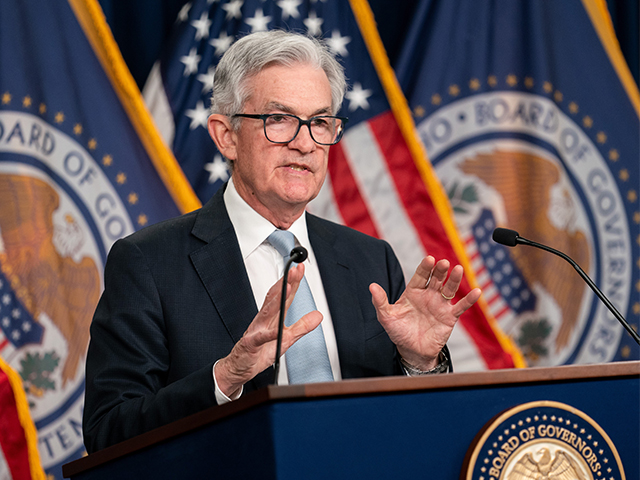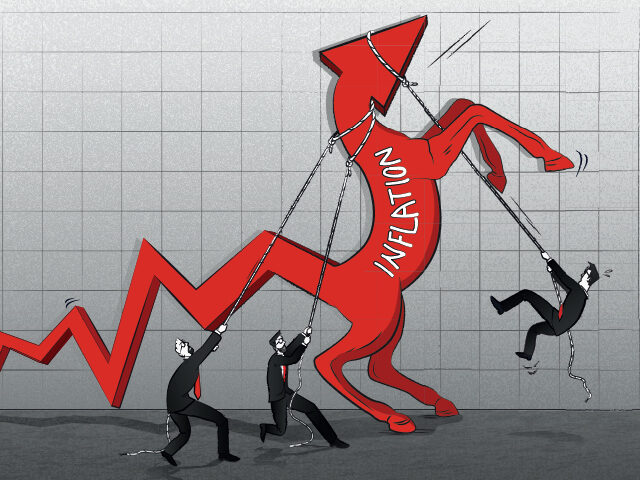The jobs numbers published this week indicate that the labor market continues to run hotter than expected, smothering hopes that it might soften enough to dampen inflation without interest rates going considerably higher. Instead, Friday’s jobs numbers raise the risk that inflation may stick around a lot longer than almost anyone expects.
The Labor Department said on Friday that nonfarm payrolls grew by 261,000, well above expectations for around 200,000 jobs. In addition, the September figure was revised up by 52,000, bringing the already hotter-than-expected prior month figure up from 263,000 to 315,000. That means there were 65,000 more workers on payrolls in September than expected.
To put these figures in perspective, the economy needs to add only about 70,000 jobs to keep up with population growth while holding the unemployment rate steady. Any job growth significantly above that number points to very high inflationary pressures coming from elevated demand for labor. Bank of America estimates that payroll growth needs to drop below 100,000 to count as a “good” report from the perspective of the Federal Reserve’s fight against inflation. It is possible we may even need to see job growth go negative to seriously bring down inflation, something which Fed officials understandably loathe to say out loud.
Deeper in the report was more bad news. The labor force participation rate ticked down again, the second consecutive month of declines. This is particularly disappointing because an increase in the participation rate is probably the only way to ease the tightness in the labor market without job losses. Additional people looking for work might raise the unemployment rate and lower the number of vacant jobs without necessarily requiring massive job losses. If the participation rate keeps falling, it will require even larger losses to soften the labor market.

The increase in payrolls was driven by the services sector, which added 200,000 jobs. Health care and social assistance payrolls grew by a seasonally adjusted 71,100, with health care growing 53,000. Healthcare payrolls are now above the pre-pandemic level; but with an aging population, this category may continue to grow.
The ranks of people working in leisure and hospitality grew by 35,000. Notably, employment in leisure and hospitality is still down by 1.1 million, or 6.5 percent, from its February 2020 level, which implies that there may still be room for even more job growth in this category.
Wage growth overall accelerated a bit from 0.3 percent to 0.4 percent, which annualizes to 4.8 percent. In leisure and hospitality, wages rose by 0.5 percent. Compared with a year ago, wages are up 4.7 percent. By most estimates, wage growth above 3.5 percent annually means inflation will run above the Federal Reserve’s two percent target. So this is still a very inflationary rate of wage growth.
All of this followed Wednesday’s Job Openings and Labor Turnover Survey (JOLTS) showing total vacancies at the end of September had risen to 10.7 million. The end of August figure was revised up to 10.3 million from 10.1 million. The quits rate–another measure of labor market tightness–stayed at 2.7 percent, where it has been for three straight months since declining from June’s 2.8 percent.
The strength of the labor market despite the most rapid pace of Fed hikes since the central bank began explicitly targeting the federal funds rate raises questions about whether inflation is already more deeply entrenched than is commonly thought. As we have pointed out, the Federal Reserve is convinced that expectations matter for the direction of inflation, but there is arguably a better case to be made that recent experience with inflation matters more in determining future inflationary pressures. If that is the case, we could be in for a great deal more inflation than anticipated.

Federal Reserve Board Chairman Jerome Powell speaks at a news conference following a Federal Open Market Committee meeting in Washington, DC, on November 2, 2022. (Liu Jie/Xinhua via Getty Images)
There are no signs yet that hyperinflation is a danger. The Fed has made it clear that it is willing to take rates as high as they need to go to bring inflation down to its two percent target—even if that means throwing the economy into a recession. What’s more, a Republican majority in one or both houses of Congress should curtail any further fiscal expansion that could further inflame the inflationary fires.
Still, the persistence of labor market strength is disconcerting. It raises the question of whether we are once again experiencing a regime change in the economy. After the global financial crisis that came to a head in 2009, employment gains were much lower than expected, economic output lagged, and the Fed consistently failed to bring inflation up to its two percent target. In other words, the economy refused to return to anything like its pre-crisis path, giving rise to the theory that the economy had entered something Larry Summers called secular stagnation.
Now the basic assumption is that once inflation is squeezed out with higher rates and a bit of fiscal discipline, we will once again return to low inflation. What if that’s as wrong as the assumption that jobs and output would recover after the financial crisis? We may find ourselves in a long struggle to bring inflation down to pre-pandemic levels just as we found ourselves in a long struggle to bring employment up to pre-financial crisis levels in the previous decade. It took six years to return to peak employment. The market is definitely not prepared for six years of above-target inflation—and therefore elevated interest rates.

COMMENTS
Please let us know if you're having issues with commenting.